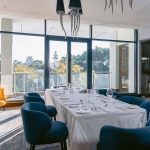Blue Train to Bohemia:
A Pilgrimage to Kalk Bay
Kalk Bay’s unique bohemian vibe has attracted a mix of artists, writers, and locals, creating a vibrant cultural scene. The town’s history, blending indigenous, European, and South-East Asian influences, adds depth to its creative community.
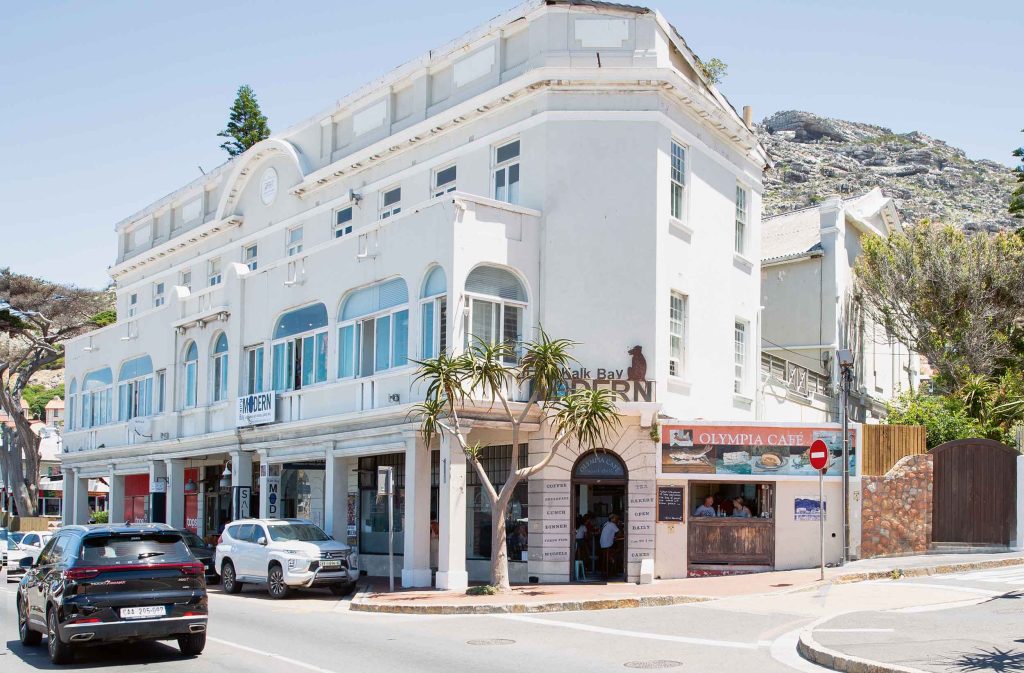
Kalk Bay is not the most popular Western Cape tourist destination, but I found myself planning a trip after watching a convincing number of TikTok videos. A bunch of students had discovered the Blue Train to Kalk Bay and were eager to explore. It was as if Capetonians had just struck gold, and I was keen for a slice of the excitement.
Aside from the frenzy, I had been drawn to this quaint hamlet along the False Bay side of the Cape Peninsula after hearing locals describe it as a place with a bohemian feel and rich cultural heritage. My research revealed a charming town that has attracted a mix of people since the 18th century: a true melting pot influenced by indigenous, South-East Asian, and European communities who have called Kalk Bay home over the last few centuries.
Established as a fishing town, Kalk Bay’s harbour remains a hub of activity, preserving its deep-rooted fishing heritage. The town is known for its colourful fishing boats and the bustling fish market, which still thrives today.
There are three ways to reach this coastal village: by car along the scenic peninsula drive, as part of an organised tour, or via the Blue Train from Cape Town. I opted for the train, wanting to experience the charm of the recently revived Blue Train. The route passes through industrial-looking Woodstock, then Rosebank and Rondebosch with their Victorian-style houses and abundant greenery, before reaching Muizenberg Station, where hordes of surfers dot the area close to the tracks. Finally, the train pulled into the sleepy but lively Kalk Bay.
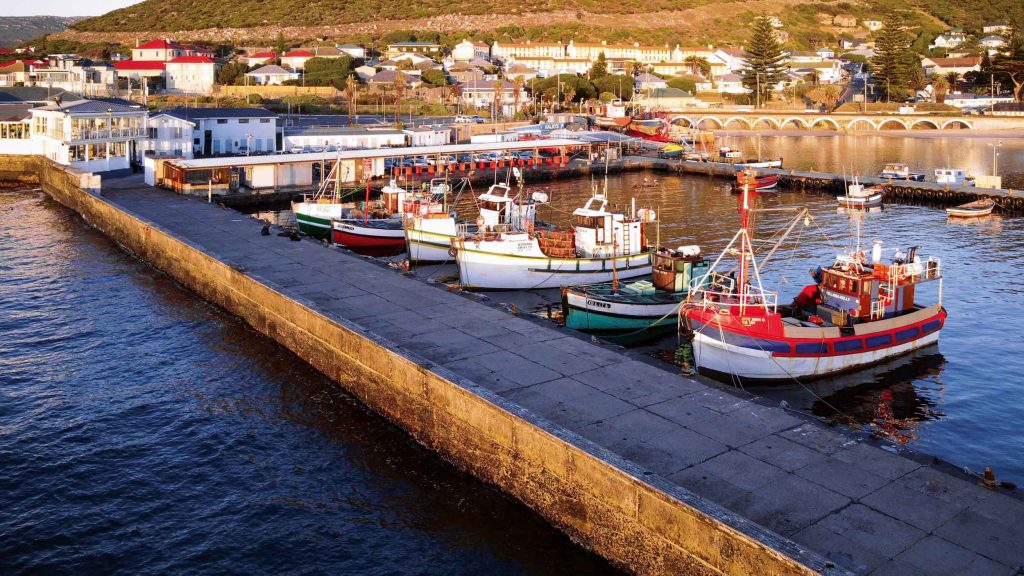
As I stepped onto the platform, I immediately recognised Dutch-style architecture, a familiar marker of the Western Cape. However, the energy in the town was unlike any I had encountered in the province. Kalk Bay has a calm yet chaotic atmosphere, with its sleepy energy met by an eclectic set of individuals. The historical roots of the town run deep. Evidence suggests the Khoisan had been living here for centuries before the first known record of Kalk Bay in November 1687, when an explorer named Simon van der Stel visited the False Bay area.
Walking along the main road, I struck up a conversation with a burly fisherman who explained how the town got its name. “The first colonists were lime workers,” he told me. “They processed large quantities of seashells into lime — kalk in Dutch — and that’s where the name comes from.” He gestured towards the sheltered bay, pointing out features that have attracted settlement for centuries: the relative wind shelter, warm north-facing slopes, the small inlet and beach, and, of course, the abundant seafood along the shoreline.
My morning explorations had drained my energy, and I started to crave sustenance. I headed to a local favourite: Olympia Café and Bakery. The cosy establishment opened in November 1997 after the owner, Kenneth McClarty, famously wanted a flat white but “couldn’t find a cappuccino for love or money anywhere on the South Peninsula,” as their website wryly claims. The café was born from an old fish-and-bait shop and has become beloved by locals and tourists alike.
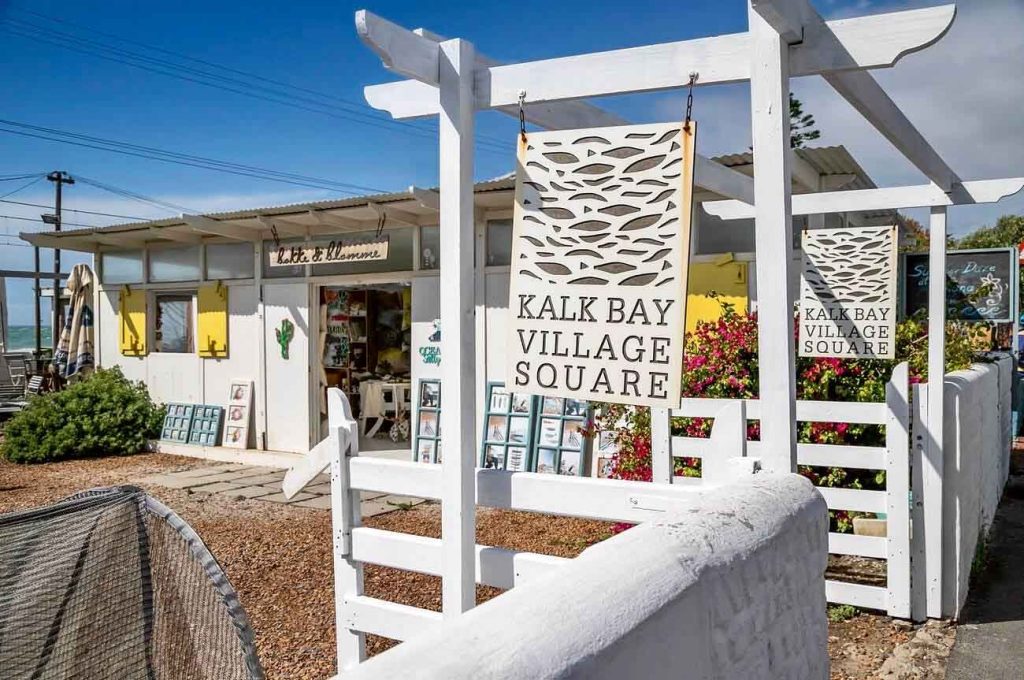
Inside, I was subsumed by the aroma of freshly baked goods. I ordered one of their famously buttery croissants and a flat white, watching a carousel of individuals wafting in and out of the café. As they came in and got their fill, I assigned them different characters. Some looked like writers and painters, others government workers and lawyers, each carrying a unique air of purpose. For my main course, I could not resist trying their renowned Linguine di Mare, which the waiter said was a crowd favourite. The pasta arrived steaming, laden with fresh seafood that had likely been swimming in False Bay just hours earlier.
The intensity of the sun greeted my scalp, letting me know it was midday. I was ready to explore more of what Kalk Bay had to offer. Following the cobblestone streets, I noticed artisanal stores and antique shops, each with its own quirky charm. Right next to Olympia Café, I discovered a steep flight of mosaiced stairs. I felt like I was discovering a long-forgotten secret society as I climbed. At the top was a gate adorned with an adorable cowbell. I rang the bell and stepped into a light and airy gallery filled with a marvellous mix of ceramics, jewellery, textiles, and contemporary South African art. This gallery was Kalk Bay Modern. Vibrant paintings by artists such as John Murray were complemented by rustic ceramics, neat sculptures, and colourful cushions housed in the gallery.
Late afternoon was setting in as I made my way to the photo-famous Dalebrook Tidal Pool, described by many as “one of the most beautiful pools in False Bay.” Even though it was a weekday, the pool attracted a diverse crowd: elderly swimmers doing methodical laps alongside playing children and sunbathing adults. The east-facing pool made it an optimal spot to watch the sunrise, I was told. Luck was not on my side that day, as the mountains blocked much of the afternoon sun.
“If you want a less crowded alternative, try Wooley’s Tidal Pool between here and Fish Hoek,” suggested a woman who noticed me taking photos. “It’s just as beautiful but not as well-known. The best times are early mornings and evenings for spectacular views. You might even encounter some small, harmless marine life.”
I headed to the Chardonnay Deli at Kalk Bay for a late lunch, situated across from Dalebrook Tidal Pool. The seaside café’s unassuming décor gave prominence to the food, exactly as a friend of mine had described it. I browsed their grab-and-go options before settling on one of their protein-rich salads featuring fresh seafood. Sitting at an outdoor table, I enjoyed my meal with a view of the pool I had just visited.
Still on a voyage to discover more art, I made my way to the electric Ink Box Art Gallery, tucked into an aptly named alleyway called Memory Lane, just off Main Road. The gallery’s dynamic and thought-provoking exhibitions featured artists whose work was just as subversive as it was spectacular. This emphasis on eclectic beauty reflected the very essence of Kalk Bay’s spirit.
Evening was creeping up on me when I made my way to the harbour to witness the town’s fishing heritage firsthand. Kalk Bay was established as a fishing town when different groups of people were united by their love of fishing, and this tradition continues today. At the harbour, I found Kalkys, a restaurant well-loved by residents of Kalk Bay. The menu hung on the wall, allowing customers to decide on their orders while queuing. Though tempted by their peri-peri prawns (a dish reflecting the town’s multicultural background), I decided to save my appetite for dinner.
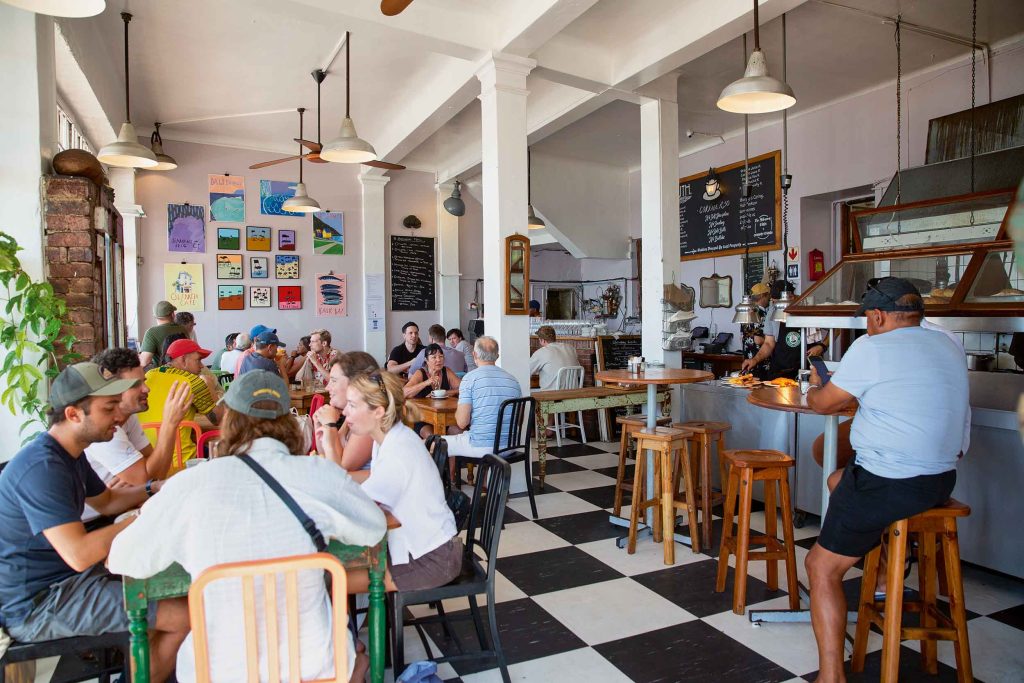
To round out my Kalk Bay experience, I treated myself to an upscale meal at Harbour House. This luxurious seaside restaurant specialises in seafood and boasts an extensive wine list filled with selections of MCCs, Pinotage, Shiraz, Rosés, and others, mostly sourced from the wine-rich Western Cape region. I splurged on grilled crayfish, paired with a silky chardonnay while watching the sunset paint the sky in spectacular hues.
My waiter shared that even during the height of apartheid, Kalk Bay remained a racially diverse and vibrant fishing town. “The spirit of this place,” he told me, “it never changed. Simple but energetic — you can still feel it today.”
I rushed to get the train back to Cape Town as night fell. I reflected on my day in this remarkable coastal village on my way back. Kalk Bay’s charm and magic exist beyond the few places I had managed to visit. Though small, the town buzzes with life and creativity, a place where the past and present exist in harmonious balance.
Iconic Blue Train Ride: The Blue Train, recently revived, offers a scenic route to Kalk Bay, passing through the picturesque Cape Peninsula. This rail journey, filled with history and charm, makes the town accessible in a unique and nostalgic way.
For travellers looking to play, lounge, or do both, Kalk Bay offers something truly special: an authentic slice of Cape Town life that most tourists never experience. Whether taking a dip in the picturesque tidal pools, visiting the quirky museums and galleries, or feasting on irresistible local cuisine, this bohemian fishing village promises experiences that will linger in your memory long after you have left its cobblestone streets behind.
On your next Cape Town adventure, consider stepping off the well-trodden tourist path. In Kalk Bay, you will discover a community that has maintained its unique identity through centuries of change — a rare authenticity that no travel brochure could fully capture.



